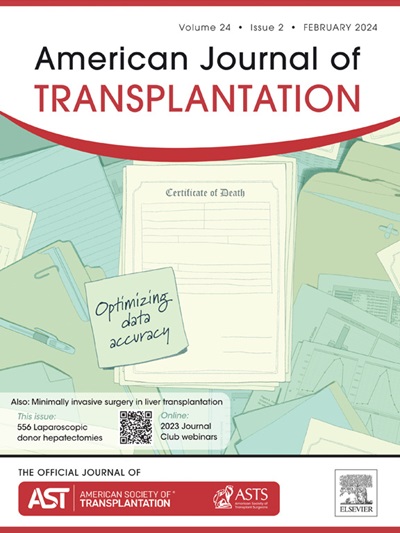Best practices in islet transplantation in mice
IF 8.2
2区 医学
Q1 SURGERY
引用次数: 0
Abstract
Islet transplantation in mice serves as a crucial preclinical model for understanding alloimmune and autoimmune mechanisms, optimizing immunosuppressive strategies, and developing novel therapies for diabetes. This review provides a comprehensive overview of best practices in murine islet transplantation, including diabetes induction models, technical aspects of islet transplantation, and criteria for transplant graft and rejection. We discuss the immunological challenges posed by major histocompatibility complex disparities, the impact of various transplantation sites, and the limitations of murine models in translating findings to clinical settings. Special emphasis is placed on emerging strategies such as stem cell-derived insulin-producing cells, immune tolerance induction, and alternative transplantation sites. Although mouse models have significantly advanced our understanding of diabetes and β-cell replacement, their inherent differences from human physiology necessitate careful interpretation of findings. The review also highlights novel imaging modalities, immunosuppressive protocols, and biomarkers for graft monitoring, underscoring the need for further refinement of these models to bridge the gap between experimental research and clinical application. By standardizing methodologies and addressing translational limitations, murine islet transplantation studies remain a key model in transplantation and can continue to shape the future of β-cell replacement therapies for insulin-dependent diabetes.
小鼠胰岛移植的最佳实践。
小鼠胰岛移植是了解同种免疫和自身免疫机制、优化免疫抑制策略和开发糖尿病新疗法的重要临床前模型。本文综述了小鼠胰岛移植的最佳实践,包括糖尿病诱导模型,胰岛移植的技术方面,以及移植和排斥的标准。我们讨论了MHC差异带来的免疫学挑战,各种移植部位的影响,以及小鼠模型在将研究结果转化为临床环境中的局限性。特别强调的是新兴的策略,如干细胞衍生的胰岛素产生细胞,免疫耐受诱导和替代移植地点。虽然小鼠模型极大地促进了我们对糖尿病和β细胞替代的理解,但它们与人类生理学的内在差异需要仔细解释研究结果。该综述还强调了新的成像方式、免疫抑制方案和移植物监测的生物标志物,强调需要进一步完善这些模型,以弥合实验研究和临床应用之间的差距。通过标准化方法和解决翻译限制,小鼠胰岛移植研究仍然是移植的关键模型,并可以继续塑造胰岛素依赖型糖尿病β细胞替代疗法的未来。
本文章由计算机程序翻译,如有差异,请以英文原文为准。
求助全文
约1分钟内获得全文
求助全文
来源期刊
CiteScore
18.70
自引率
4.50%
发文量
346
审稿时长
26 days
期刊介绍:
The American Journal of Transplantation is a leading journal in the field of transplantation. It serves as a forum for debate and reassessment, an agent of change, and a major platform for promoting understanding, improving results, and advancing science. Published monthly, it provides an essential resource for researchers and clinicians worldwide.
The journal publishes original articles, case reports, invited reviews, letters to the editor, critical reviews, news features, consensus documents, and guidelines over 12 issues a year. It covers all major subject areas in transplantation, including thoracic (heart, lung), abdominal (kidney, liver, pancreas, islets), tissue and stem cell transplantation, organ and tissue donation and preservation, tissue injury, repair, inflammation, and aging, histocompatibility, drugs and pharmacology, graft survival, and prevention of graft dysfunction and failure. It also explores ethical and social issues in the field.

 求助内容:
求助内容: 应助结果提醒方式:
应助结果提醒方式:


